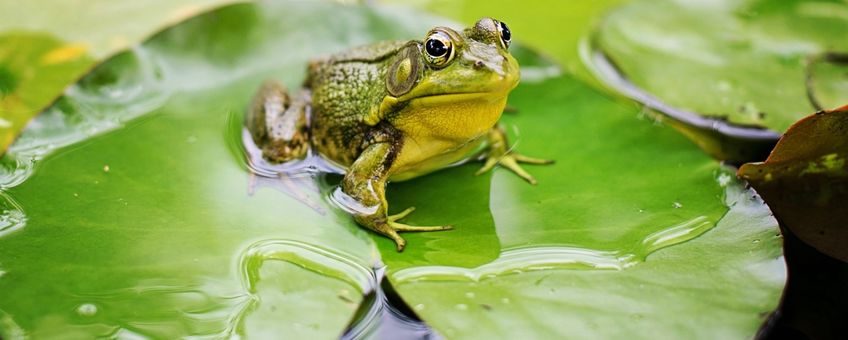
Bullfrogs helped a deadly fungus make the jump to the Western U.S.
San Francisco State UniversityThe danger of moving animals and plants around the world
The fungus Batrachochytrium dendrobatidis (Bd) has rapidly spread around the world since the 1970s, causing a skin disease called chytridiomycosis and wiping out more than 200 species of amphibians globally. In the United States, these declines have followed a curious pattern. “In the whole region east of the Rockies, there hasn’t been a single outbreak of Bd,” said study author Vance Vredenburg, a professor of biology at San Francisco State. “But in the West there’s hundreds, if not thousands.”
American bullfrogs (Rana catesbeiana), a species introduced to the West by settlers who wished to populate ponds with an abundant source of frog legs, have for over a decade been a main suspect. Bullfrogs can carry Bd without falling victim to it themselves, making them a potential vehicle for the fungus to colonize new habitats that harbor vulnerable amphibians.
Firmly placing the blame on bullfrogs, however, has been difficult. “The problem is we need a time machine to see what happened,” Vredenburg explained. So he and a team of colleagues sought out historical data from around the American West to pinpoint when bullfrogs arrived in each region and how those dates line up with the first local records of Bd.

In 83 out of the 100 watersheds where the team could dig up data on both bullfrog and Bd occurrence, the frogs were spotted first or in the same year. And in 13 of the remaining 17 cases, bullfrogs had previously been found in a neighboring region. “Even when Bd got there before bullfrogs, the frogs were usually close by,” Vredenburg explained. So these new findings are more evidence in the case scientists have built against American bullfrogs - if their presence is a prerequisite for an outbreak, it appears even more likely that they’ve contributed to Bd’s spread.
That link between frog and fungus explains patterns in the U.S., but it’s also relevant far beyond the country’s borders. Thanks in part to a U.S. Agency for International Development program that shipped bullfrogs to developing countries to start frog farms, the invasive amphibians have taken hold in parts of Europe, Asia and South America. “I hope researchers will take this study and try it in other parts of the world,” Vredenburg said.
As for the rest of us, the study holds a simple lesson: Keep plants and animals where they are. “We need to stop introducing non-native species to areas where they don’t belong,” Vredenburg said. “Not just in our own backyard but globally.”
The study is published in the scientific journal PLoS ONE.
Text: San Francisco State University
Photos: Pixabay
